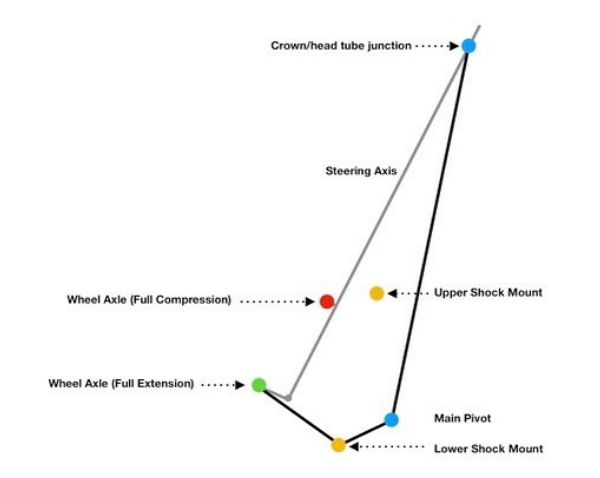"I know it looks weak, but this thing is rigid as hell."
“I know it looks weak, but this thing is rigid as hell.” We speak to the inventor of the unique RockSled single-sided linkage suspension fork.
>>> Best mountain bike suspension forks 2020
We stumbled across RockSled on Instagram. The fork is a single-sided leading-link fork. Kinda like a Trust Shout mixed with a Cannondale Lefty.
160mm travel via a rear shock as the damper. It offers dynamic offset (45mm to 17mm) that increases mechanical trail as the suspension compresses.

We contacted Ash from RockSled with a few questions…
Is it just a personal project or are you going to go into production?
Ash: “For now it is just a prototype, to see if it could be built and if the benefits (supposed) could be felt. There’s been a tonne of interest though, with lots of private messages asking to buy one, but I need at leat one more prototype and a lot more testing until I think about going into production. I’d love to, as biking is a huge passion of mine, but I have a day job so I don’t need it to succeed, if that makes sense. I think it would be great if it grew organically, and go from there.
“As for price, the prototype was around £1,800 or so, obviously not including all the design time, etc. They were one-off parts as well so economic of scale will bring the costs of the individual parts down. I think it would end up being slightly more expensive than the top forks from the main brands, as a rear shock needs to be added into the mix as well.”

Er… why?
“I had seven criteria I wanted to hit with this first prototype, and I think I managed to meet all of them.
“Point 1 was stiffness and minimal flex around the crown. The carbon structure obviously helps with this, but an aluminium strut/leg chassis would work as well I’m sure.

“Point 2 was to get rid of as much stiction and binding as possible when compared to telescopic forks. This was achieved by using fairly large (20x32x7) bearings on the linkage, and only having the stiction of the shock shaft to overcome. It feels super easy to initiate the travel, and ridiculously active compared to the forks I was using before.
“Point 3 was to the ability to use any rear shock available on the market, thereby having access to the best dampers. Almost all air and coil shocks will fit, and although I’m using a somewhat budget/middle ground shock (Marzocchi bomber CR), in theory a boutique shock (EXT, Push, etc.) would make the performance in a different league.

“Point 4 was to increase steering stability as the fork went through its travel. The easiest way to do this is to make the offset get smaller as the fork compresses. Ended up with 45mm offset at top out (130mm trail) and 17mm offset at bottom out (165mm trail). Not sure if I can notice this feeling yet, but steering does feel very solid and predictable. More testing needed on this one!
“Point 5 was to have a progressive leverage curve to enable the use of a coil shock and to give a bit of bottom out resistance. The best I could do with the stroke length and arrangement of the parts was beginning at 3:1 and ending at 2.54:1. Not the most progressive, but certainly seems to be adequate.
“Point 6 was to not introduce any new standards! This uses a normal tapered steerer, 20mm boost hub, 200mm disc, and will fit 27.5 and 29er wheels.

“Point 7 was the one I was most unsure about… anti dive is a force that inhibits the fork from compressing when the brakes are applied and the rider’s weight shifts forward. However, because the link moves through such a large angular change (47 degrees or so) and the brake calliper is mounted on the link, the anti dive on this version is very strong. With the brake applied the fork will still compress and move as normal, but it is definitely not as active as if the brake calliper was floated. Still on the fence about this feature! Prototype 2 will definitely feature a full floating brake to make the braking behaviour the same as a telescopic fork.”
What’s the next step?
“I have ideas for version 2 of the fork already, mainly to do with adjustable anti dive. My solution is fairly simple, so here goes….. The brake calliper would be mounted on a link that pivots around the wheel axle, which is then linked to the fork leg by a bar. The four holes in the brake link allow the anti dive to be adjusted in 10 degree increments. As anti dive is generated by the calliper moving around the disc when the suspension compresses, adjusting the amount of rotation adjusts the strength of the anti dive. So, the bottom hole forms a perfect parallelogram and gives no anti dive, the next gives 10 degrees, the next gives 20 degrees, and the last gives 30 degrees. This version is a few months away at least, but should allow me to test the most suitable range of anti dive adjustments.”




